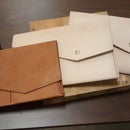Introduction: How to Make Link's Ordon Sword
I've noticed a lot of people making Link's master sword, which makes sense. It's kind of THE Zelda sword. Recently, however, I was looking at some of the art on the Zelda: Twilight Princess game guide and realized that I really like the design of the Ordon sword. It's very simple but it has clean lines and is just a really nice looking sword. So I decided to make it my next sword prop.
Step 1: Supplies
For this project I used:
-A Board (scrap from a pallet)
-A Short Dowel Rod
-Wood Glue
-Spray Paint
-Brown Leather or fabric
-A Saw
-A Jigsaw
-A Drill
-A Router
-A Rasp and Files
-A Sander
Step 2: Design
Of course since the Ordon sword has already been designed this job is mostly done for us but there was a little problem of inconsistent detailing that I had to deal with. While looking for reference pictures I realized that the guard on the sword was drawn a couple different ways. Since they were both official artwork and therefore both correct I just picked the one that I liked the best. I also couldn't figure out what size it should be so I just kind of... guessed.
Even with the sword itself already designed I still had to decide how I wanted to build it. I decided to go with a basic flat sword blank that went from tip to pommel and add each element as individual pieces. So, after figuring out the shape I needed I drew it out on the board. I ended up making it a total of 42" long and 3" wide. Of the 42" I alotted 8" for the handle, 2" for the pommel, and 1.5" for the guard.
Step 3: Cutting Out the Sword
To cut out the sword blank I used a jigsaw. My board was the exact width I wanted so I just had to cut the tip, pommel, and handle out. If you're cutting your sword out of a wider board you might also want to use a circular saw or something else that is good for cutting long straight lines.
At this stage it looks kind of like a cricket bat. Let's see if we can't do something about that.
I used a router to give the blade its edge and then sanded it all down with a belt sander. The router bit I used was a 5/8" Chamfer bit. If you don't have a router you can use hand tools instead. It will definitely take longer but a good rasp should work.
Step 4: Cutting Out the Pommel and Guard
You can use any excess you trim off the sword for this part, but the board I'm using is a very hard wood and I had some other scrap that was much softer. So I'm using that since it will be easier to work with.
I traced the pommel from the main sword blank onto the other wood. I cut out the sides but left it attached to the board. Then I cut through the middle splitting it into two thinner pommels. Then I cut it off and gave it a good sanding.
For the guard I drew up a pattern for the top and then for the side and transferred it to the wood. I had to put two boards together to get the right thickness. I glued the two boards together with wood glue and clamped them tightly until it cured.
Once the glue was cured I drilled out the slot that the sword would fit into. Notice that I only drilled the hole wide enough for the pommel to fit through. I didn't want it to be able to slide down the blade. Then I used a small file to curve the inside edge down so it would rest against the rounded part of the sword blank. After I was happy with the inside I cut the shape out of the block.
Next came refining the shape. I used a straight saw and a coping saw to get the basic shape, then moved to a belt sander, and then finished by going over it with a file. After I was satisfied I did a test fit on the sword blank.
Step 5: Making the Grip
I wanted the grip to be round and thought the best way to achieve that would be to attach half of a dowel rod on each side. I'm no longer sure this was the best way to do this.
In order to do this I used a saw to split the dowl rod down the middle. If you choose to do it this way just make sure that you choose a dowel rod the same width as your handle.
Step 6: Putting It All Together
This step is pretty much just a matter of slathering everything with wood glue and clamping it together. Sort of.
First I slid the guard down and glued it in place. When I say "slid" what I really mean is "used a rubber mallet to pound it into place". I wanted a snug fit so I just kept filing the inside of the guard and sanding the handle down until it just fit. The I tried to gently pound it into place with the mallet. Once it was in place I squirted some glue into the wider end of the hole. It's honestly not glued that well but it can't slide back over the full handle so it doesn't matter.
After the guard I actually did the pommel next. I put some wood glue on either side and clamped the pommel pieces on.
After the pommel was dry I checked my handle pieces, trim off a little excess (that's why I did the pommel first) and glue them on.
Once everything was glued together I did some touch up stuff with my dremel. I shaped the edges of the pommel better so they would all match each other perfectly. I also added the detail to the pommel since I had forgotten to do that. It wasn't much of anything, just that little hole in the middle.
Step 7: Painting
To paint it I started with a basic spray paint primer. Give it a couple coats to cover the wood grain so it doesn't show through.
After the primer dried I gave it a couple coats of a hammered silver spray paint. I actually didn't want the hammered effect but I was trying to find a paint that would give the look of metal without that metallic fleck in it, because I've never seen a sword with metallic fleck in it. If you spray really lightly you can actually avoid the "hammered" look.
Step 8: Wrapping the Handle
This part is pretty easy. I had some scrap brown fabric around that I cut into a long strip. Pretty much just glue one end down and wrap it around until the handle is covered. Cut the excess off, put some glue on the end, and tuck it into itself.
I want to seal the fabric with something to keep it from fraying and to secure it better but I don't know if I can use glue without it being sticky. I know it would dry but would it react to sweat or the heat from my hand? If anyone has any suggestions I would love to hear them.
Step 9: The Finished Product
It's done!
Stand back and admire your work. Take it outside and swing it around a bit. Mount it somewhere for everyone to see. You are awesome. Pat yourself on the back. Then realize you don't have a scabbard to sling across your back like Link and run go make one.

Participated in the
Game.Life 3 Contest

Participated in the
Halloween Props Contest

Participated in the
Epilog Challenge V













